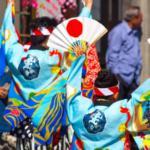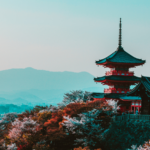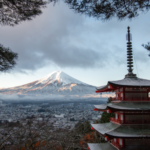Hey there wanderlusters and welcome to your ultimate guide for a perfect day trip to Nara, Japan! This Nara day trip itinerary itinerary is designed to give you all the best places to eat, drink, and see. After all, as your travel-savvy big sister, I’m here to ensure your adventure is as smooth and enjoyable as possible.
This city was Japan’s first permanent capital and is a charming destination rich in history, culture, and natural beauty. This itinerary is tailored just for you and hits all the must-see spots and hidden gems.
From feeding the adorable deer in Nara Park to marveling at the grandeur of Todai-ji Temple, this guide will help you make the most of your precious travel time. So, pack your cutest travel outfit, grab your camera, and let’s embark on a memorable journey through Nara!
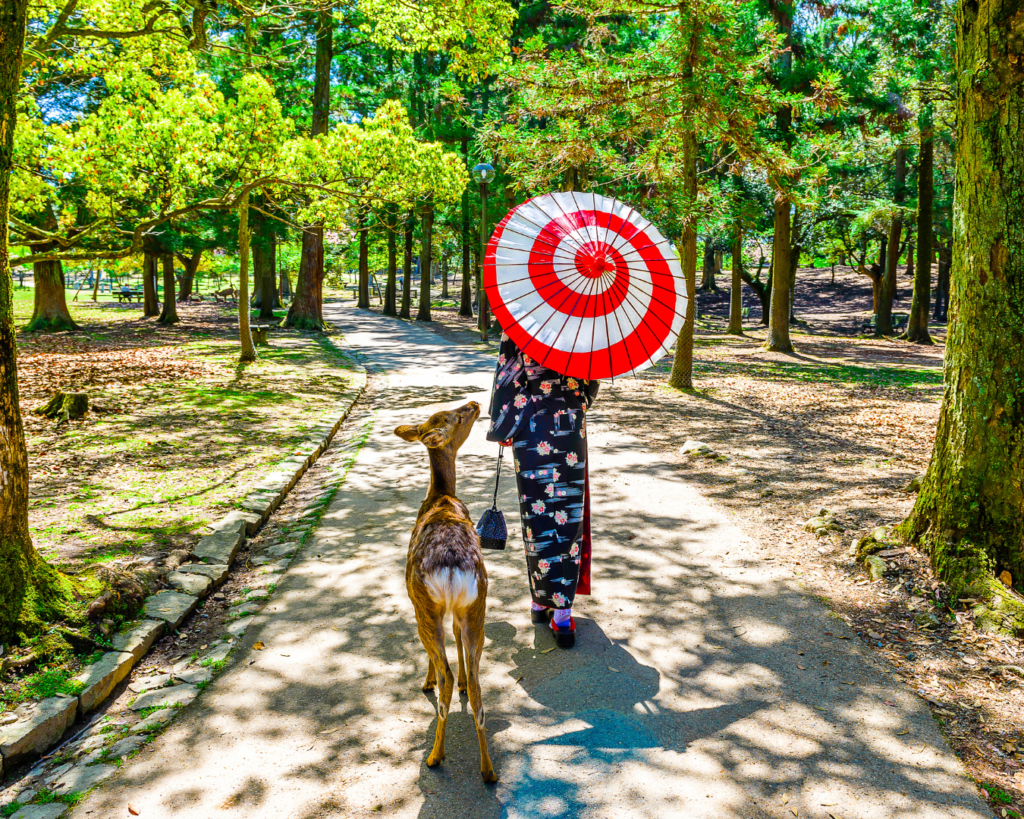
Blog Posts You Might Like
- A Guide To Solo Female Travel in Japan
- The Perfect 3-Day Kyoto Itinerary
- The Best 4-Day Osaka Itinerary
What To Pack For Japan
I highly recommend packing as light as possible… Because believe it or not you’re going to end up buying a lot of Japanese shit. (Trust me, I tell myself I’m not gonna buy so much stuff and then I do.)
My favorite travel suitcase brand is Béis. I’m obsessed with their weekender bag, carryon, and checked luggage. Use my code for $15 off your first order and 150 points toward your new account.
Travel Essentials For Travel in Japan
- Japan travel adapter – Japan uses the same plugs as the USA which is types A and B.
- Unlocked phone – Book a simcard before you visit Japan and pick it up at Narita Airport.
- USB power strip – This is great for charging multiple electronics at once and saving space.
- World Nomads Travel Insurance – Give yourself peace of mind. They have flexible COVID-19 cancelation plans.
- Toothpaste – Japanese toothpaste sucks. Bring your own from home.
- Important documents – Bring copies of any important medical documents and a copy of your passport. Leave one copy on your fridge just in case.
- Your passport – This should be a given, but please don’t forget it.
- Credit Cards/Debit Cards – Many restaurants, restaurants, and establishments take card.
- Medication – TSA allows you to bring essential medication in your carryon.
Physical Japan Sim Card
Japan has insanely fast internet… Although they are very stingy for sharing wifi. I do recommend you get a sim card so you can stay connected at all times.
There are 3 major carriers in Japan—Docomo, AU, and Softbank. You can easily book a physical Japan sim card here.
Get An E-Sim Card for Japan
One of the coolest things I discovered in my travels is the beauty of an E-Sim card. Why is it so great?
It gets downloaded directly to your phone and is activated immediately. This works best if your phone is unlocked. You can purchase an E-sim card for Japan here.
Get Pocket Wifi
If your phone is locked and you’re unable to switch sim cards out, the next best option is to rent pocket wifi. This is also great if you’re traveling with a friend or have multiple devices to connect. Book your pocket wifi here.
Worried About The Japanese Language Barrier?
A language barrier may seem scary during a solo trip to Japan. These apps and are all things I’ve used and tested myself.
1. Google Translate
This is a free app where you can put in your mother tongue and target language. You can also take photos and Google will translate.
Google Translate for iPhone | Google Translate for Android
2. Japanese Pod 101
Learning some easy travel phrases is a good way to prepare for your oncoming trip to Japan. Check out their free Japanese word of the day guide here.
3. Pocketalk
The Pocketalk is a super cool device as it translates 82 different languages. It even has a text to translate camera. This is great for helping you navigate around Seoul. What I like most is its small enough to fit in your pocket or in your purse. You can buy your Pocketalk here.

4. Time Kettle
The Timekettle is amazing if you’re going for a longer term trip and want to make friends. Each person gets an earbud and through the app the conversation is translated in real time. It’s super nifty and also a great Korean language learning tool. You can buy your Timekettle device here.
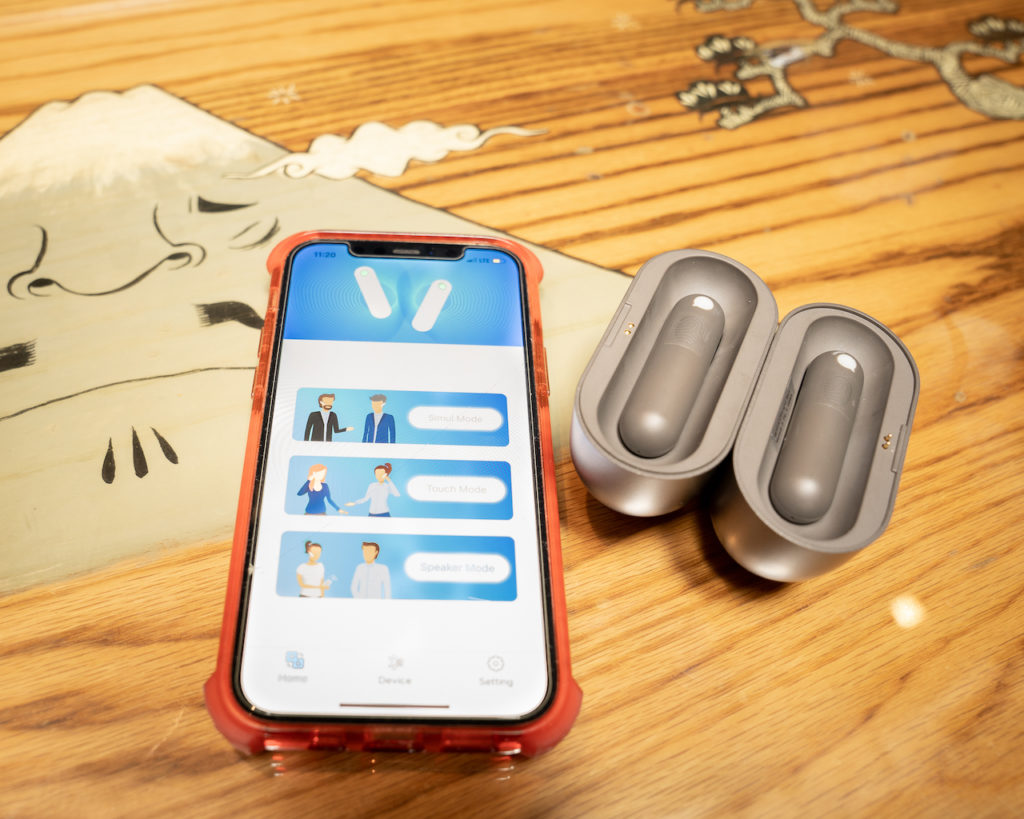
World Nomads Travel Insurance
Sadly, COVID-19 is here to stay and now a daily part of life. I recommend booking World Nomads Travel Insurance. With the World Nomads Travel Insurance, you can expect:
- Trip Cancelation – This benefit helps you recover non-refundable, pre-paid trip costs when you have to cancel your trip for a covered reason, including for an unexpected sickness that keeps you from traveling.
- Emergency Medical – The only thing worse than catching COVID-19 is getting infected away from home. If you get sick with COVID-19 or another illness, you can get diagnostic tests to confirm your case and other emergency medical benefits.
- Medical Evacuation – If you’re in an inadequate medical facility, our plans have benefits that can arrange a transfer to a hospital capable of treating your medical needs.
- Trip Interuption – During your travels, you might have to return home early. With trip interruption, you could get reimbursed for a one-way, economy-class ticket home and any pre-paid, unused portions of your trip if you need to change your plans for a covered reason.
- Trip Delay – Even when there isn’t a pandemic, traveling can have its bumps and hiccups. If your travels are delayed at least six hours by a covered event, you can be covered.
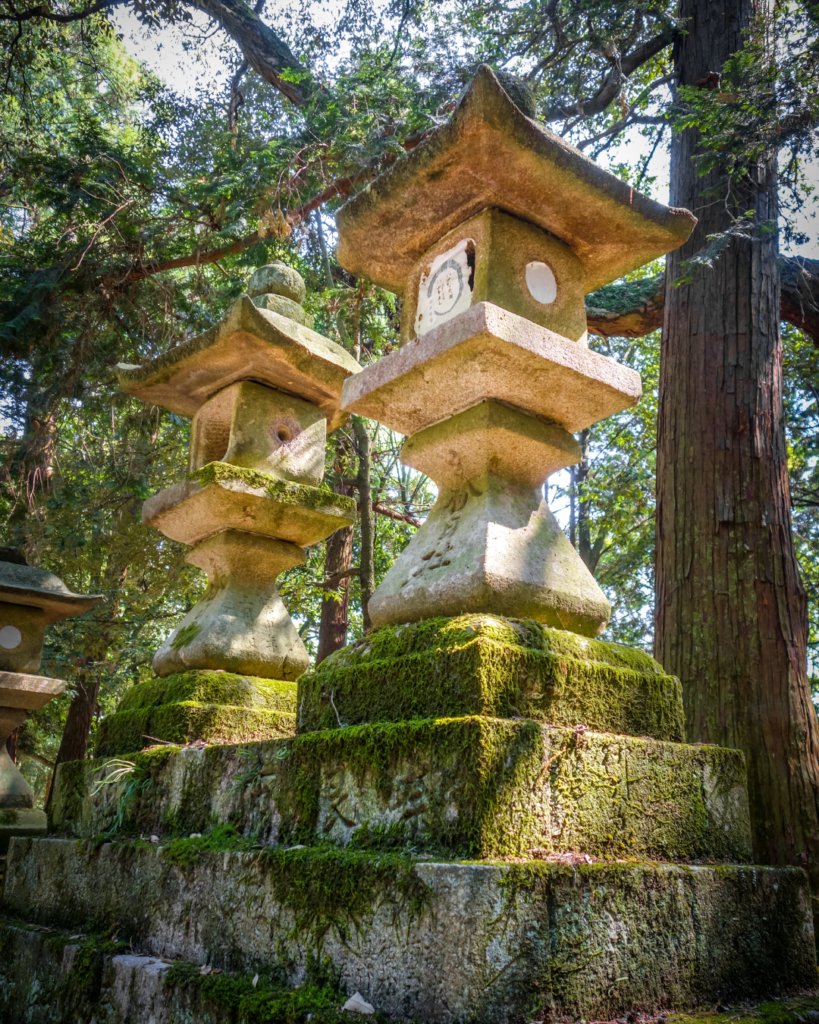
Getting to Nara
Making your way to Nara is a breeze, with convenient transport options from major cities like Kyoto and Osaka. Nara is a short train ride away and easily accessible via the JR line.
How To Get To Nara From Kyoto Station
If you’re starting from Kyoto Train Station, the best way is the JR Nara Line. The local train takes about 70 minutes, with the rapid train taking around 45 minutes to reach JR Nara Station.
This route is covered by the Japan Rail Pass (JR Pass), making it a cost-effective choice. Once you arrive, you’ll find yourself within a short walk of many of Nara’s main attractions.
Getting to Nara From Osaka-Namba Station
For those traveling from Osaka, I recommend going on the Kintetsu Nara Line.
- Kintetsu Nara Station – The express train from Osaka-Namba Station to Kintetsu-Nara Station takes about 40 minutes. This station is slightly closer to Nara Park and other central attractions.
JR Pass and Local Trains
Using a JR Pass is a game-changer for your Nara day trip itinerary. It covers the JR lines, including the JR Nara Line from Kyoto and the local JR lines within the Kansai region.
This can save you time and money, especially if you plan to explore other parts of Japan. If you don’t have a JR Pass, local trains are still a great option, with frequent services that make it easy to get around.
Tips for a Smooth Journey
- Timing: Aim to leave early to make the most of your day in Nara. Trains run frequently, but starting early gives you ample time to explore.
- Tickets: If you’re not using a JR Pass, consider purchasing your tickets in advance to avoid queues at the station.
- Comfort: Japanese trains are known for their punctuality and comfort, so sit back, relax, and enjoy the scenic ride.
Recommended Nara Day Trips
Sometimes going with a local guide is easier. This takes out the guess work of going on the train line alone and planning everything yourself. Below are some done for you day tours.
Day Trips To Nara From Osaka
- Kyoto and Nara Park One Day Tour with Lunch from Osaka
- Nara, Todaiji Temple & Kuroshio Market One Day Tour from Osaka
- Arashiyama, Kinkakuji, Nara Park Day Tour From Osaka/Kyoto
Day Trips To Nara From Kyoto
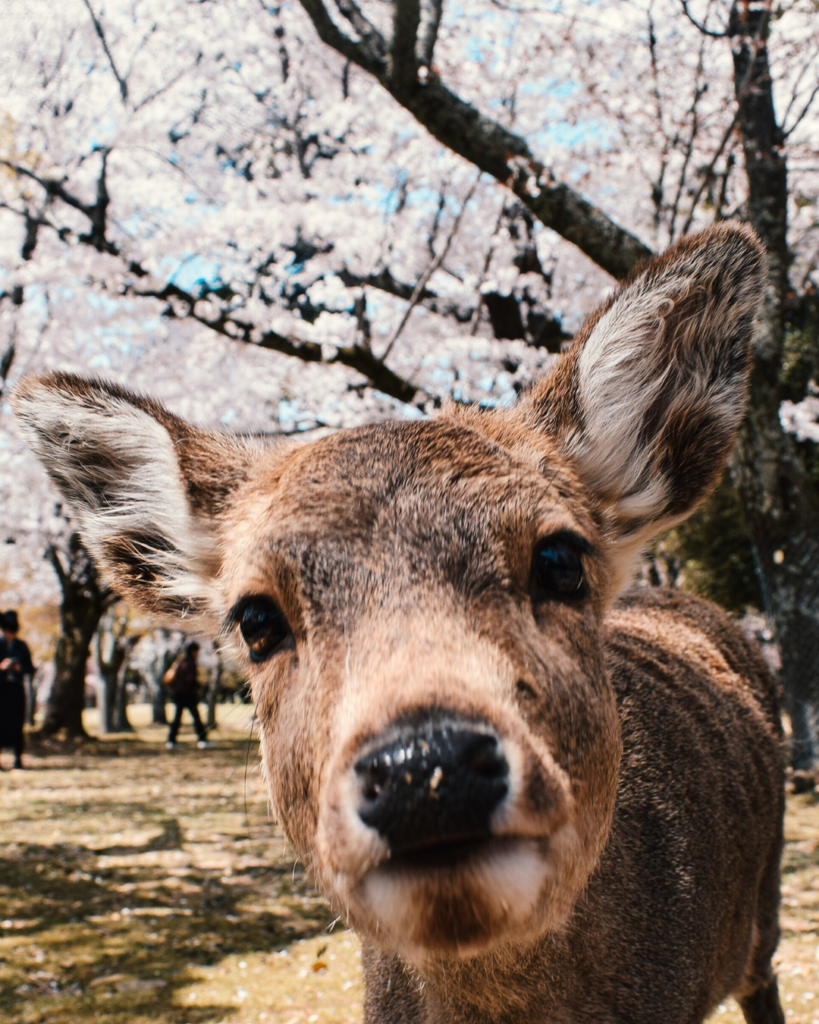
Nara Day Trip Itinerary Map
Morning: Exploring Nara Park and Its Surroundings
Kick off your perfect day in Nara with a visit to Nara Park. Fun fact, Nara’s deer are said to be messengers to the gods in Shinto. The Nara Deer Park is located right outside Todaiji Temple.
Nara Park
Get ready for one of the best day trips in Nara Prefecture! Your first stop on your Nara travel guide should be to the main event!
Outside the Buddhist temple of Todaiji, you’ll be greeted by friendly deer looking for snacks. (Some of them can be assholes if you don’t feed them deer crackers fast enough.) They can bite so be careful.
You can purchase deer crackers from vendors around the park. The deer have learned from the many tourists and will bow for crackers. This is a unique experience, but please keep in mind these deer are wild animals.

Todai-ji Temple
Next on your Nara itinerary, head over to Todai-ji Temple, a UNESCO World Heritage Site and home to the Great Buddha Hall. It’s a short 10-minute walk away from Nara Deer Park.
This magnificent main hall houses one of Japan’s largest bronze Buddha statues. This great Buddha statue truly is a sight to behold. This Great Hall is considered one of the most important temples in Japanese history.
Don’t miss the Nandaimon Gate at the entrance, guarded by two fierce-looking statues. As you explore the temple grounds, take in the serene atmosphere and the impressive architecture that dates back to the 8th century.

Nigatsudo Hall
One of Nara’s best-kept secrets is Nigatsudo Hall, part of the larger Todai-ji Temple complex. A short walk up a gentle hill leads you to this elevated hall, which offers stunning panoramic views of the city.
The hall is particularly famous for its beautiful sunset views, making it a perfect spot to relax and reflect on the day’s adventures. The climb is definitely worth it, providing a closer look at the intricate wooden architecture and the serene atmosphere.
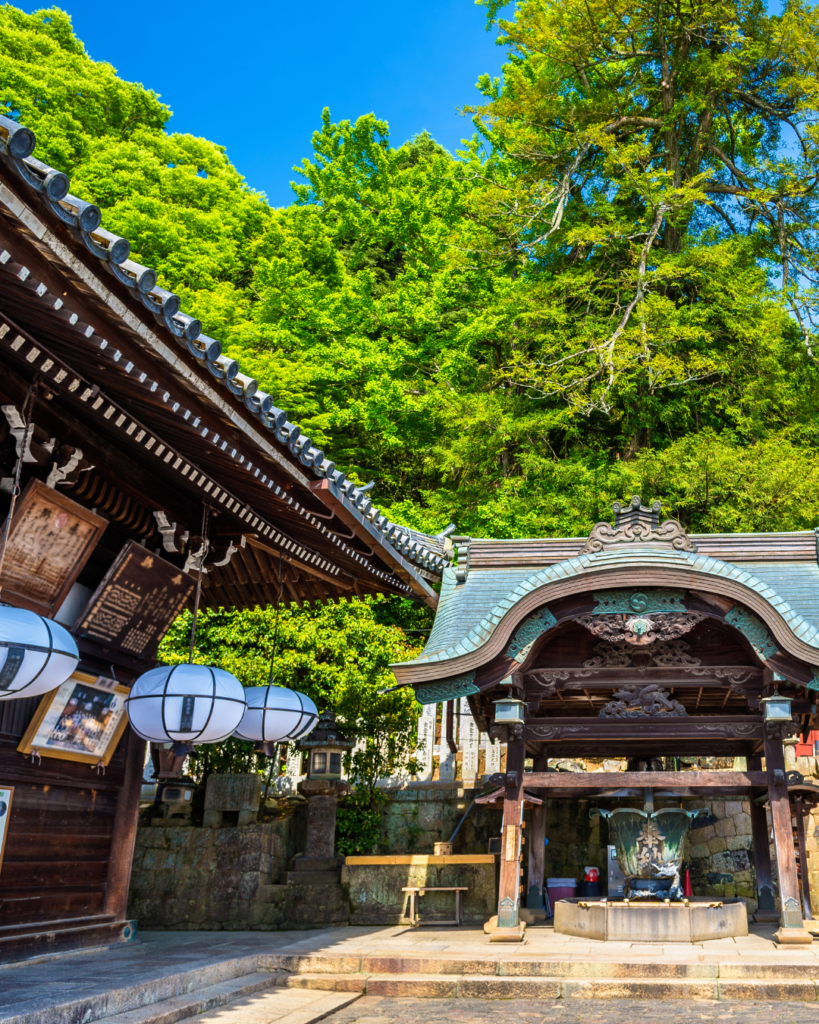
Kofuku-ji Temple
A short walk brings you to Kofuku-ji Temple, another of Nara’s historical gems. This temple is another UNESCO World Heritage Site boasting a Five-Story Pagoda and the Central Golden Hall.
The Kofukuji Temple is a perfect spot to learn a little bit about the rich history of the Nara period and appreciate the stunning architecture. Check out the National Treasure Museum, which houses important artifacts from Japan’s past.
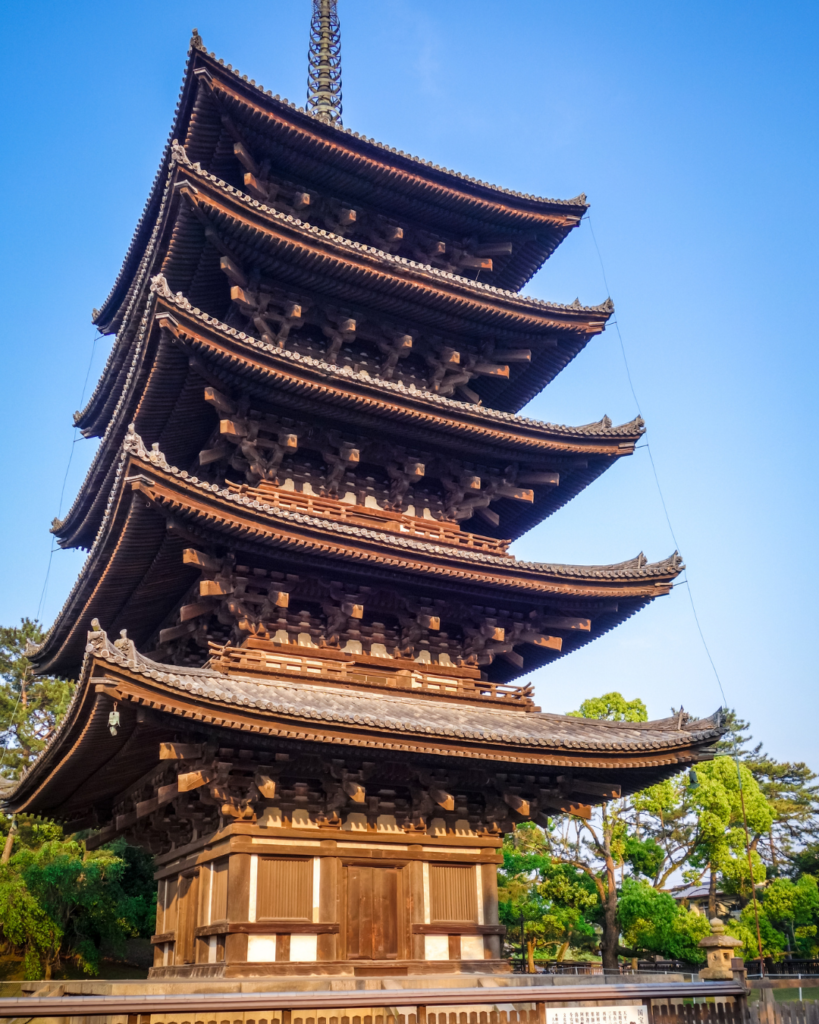
Afternoon: Discovering More Cultural and Historical Sites
After a delightful morning exploring Nara Park and its iconic surroundings, it’s time to delve deeper into the cultural and historical treasures Nara has to offer. Your afternoon will be filled with visits to some of the city’s most revered temples, shrines, and museums.
Kasuga Taisha Shrine
Start your afternoon at the enchanting Kasuga Shrine. This ancient Shinto shrine is renowned for its beautiful stone lanterns and bronze lanterns that line the pathways, creating a magical atmosphere.
The shrine itself, nestled within the forest, is a peaceful retreat where you can appreciate the spiritual side of Nara. Don’t forget to explore the inner grounds, where you can see the stunning vermilion-colored buildings up close.
The Kasuga Taisha Shrine is a testament to the rich history and tradition of the Heian period.
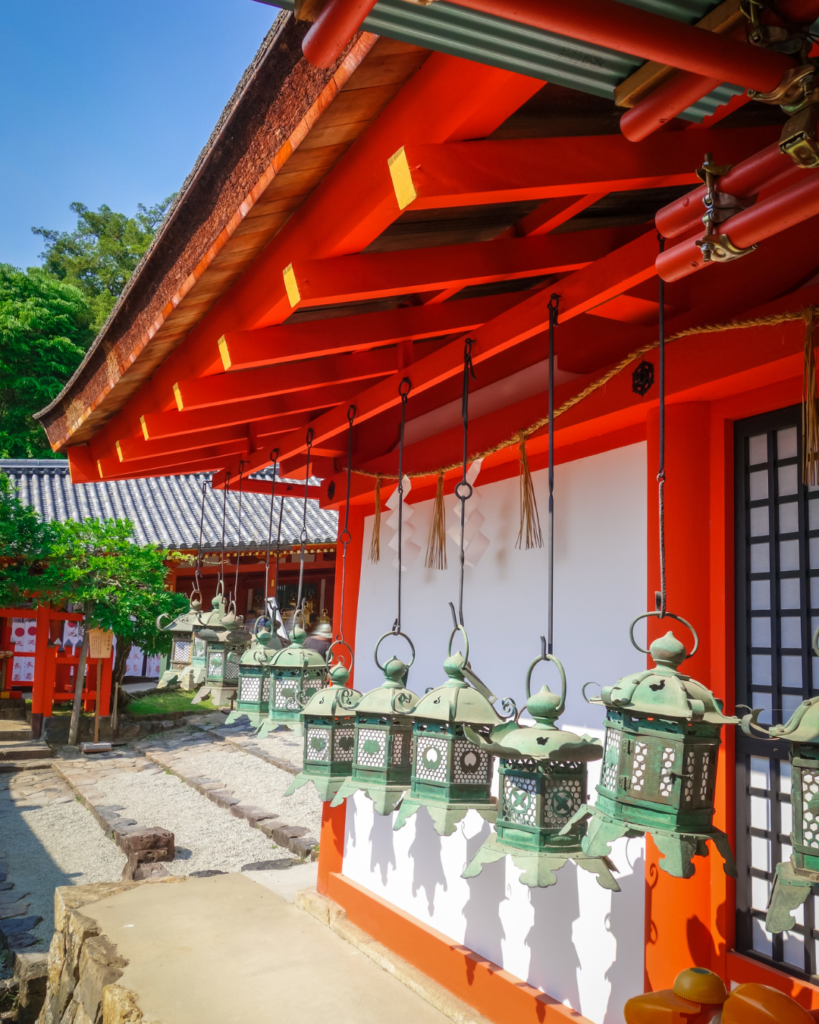
Optional: Nara National Museum
The Nara National Museum is a must-visit for history enthusiasts. It houses a vast collection of national treasures and temporary exhibitions and offers a comprehensive look at Japan’s cultural heritage.
Isuien Garden
The tranquil Isuien Garden is definitely worth visiting! In fact, I spent much time in this garden because I loved it so much.
This beautiful Japanese garden is divided into two parts. The garden features elegant ponds, meticulously maintained plants, and traditional tea houses. The peaceful ambiance of Isuien Garden offers a serene contrast to the bustling tourist attractions.
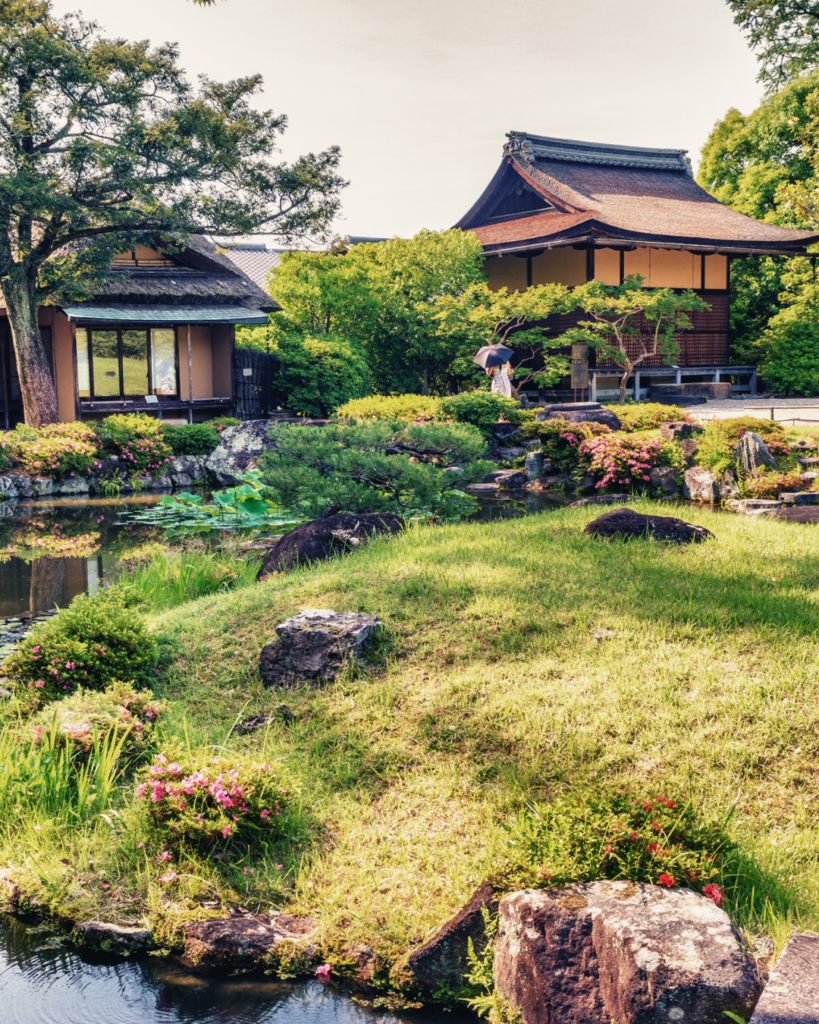
Optional: Exploring Lesser-Known Spots
If you have extra time in the late afternoon, consider visiting some hidden gems and lesser-known spots around Nara. For instance, the Nigatsudo Hall offers a closer look at the city’s religious architecture and provides stunning panoramic views of Nara from its elevated position.
Another hidden gem is the Higashimuki Shopping Street, where you can indulge in some local snacks and do a bit of shopping for souvenirs.
Late Afternoon: Hidden Gems and Leisure
As the day winds down, it’s the perfect time to explore some of Nara’s hidden gems and indulge in a bit of leisurely activity. This part of your day trip is all about discovering off-the-beaten-path spots.
Higashimuki Shopping Street
Higashimuki Shopping Street is lined with shops, cafes, and stalls selling local delicacies. It’s an ideal place to pick up souvenirs.
You can also try local snacks like mochi and rice crackers, and experience the bustling energy of Nara’s local culture. The friendly vendors and lively atmosphere make it a fun and engaging place to spend your late afternoon.
Mount Wakakusa
For those who love a bit of nature, a short hike up Mount Wakakusa is a fantastic way to end your day. The mountain, located just behind Nara Park, offers a relatively easy trail leading to a grassy summit.
The view from the top is breathtaking, especially in the late afternoon light, with a sweeping panorama of Nara and its surrounding landscapes. If you’re visiting in early April, you might even catch the stunning sight of cherry blossoms in full bloom.
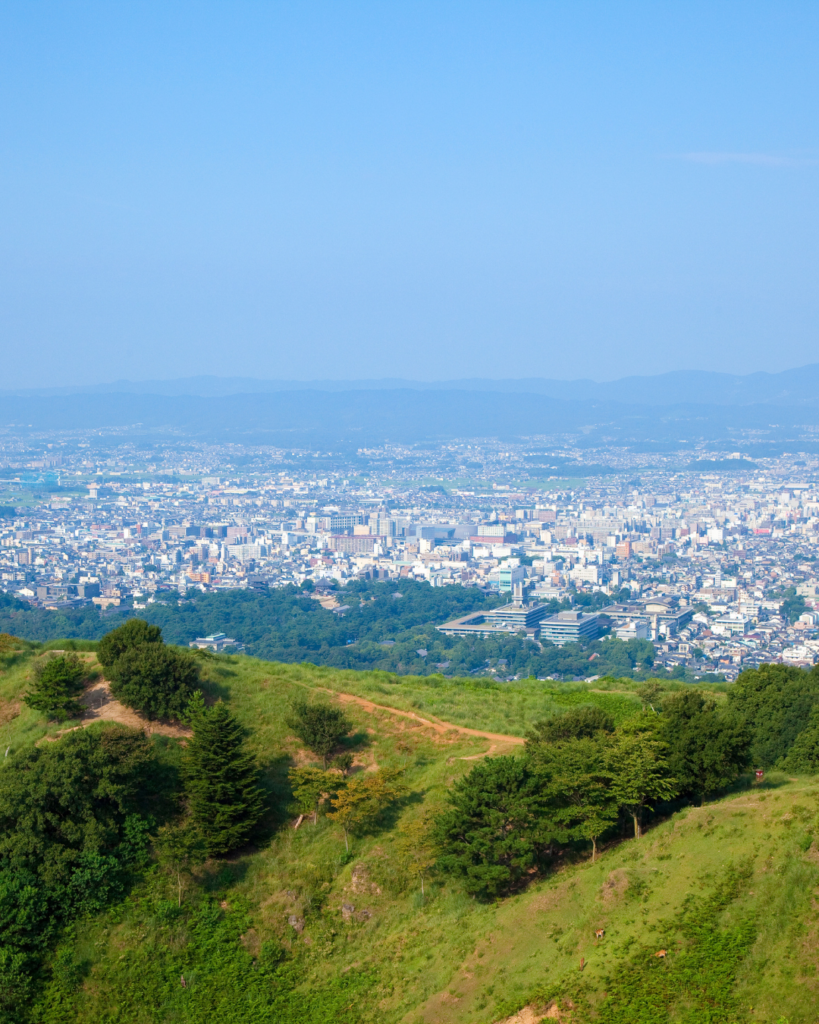
Relaxing by the Ponds
If hiking isn’t your thing, consider spending a peaceful moment by a tranquil pond or Nara’s many Japanese gardens. The Sarusawa Pond, located near Kofuku-ji Temple, is a serene spot where you can sit, relax, and enjoy the reflection of the temple’s pagoda in the water.
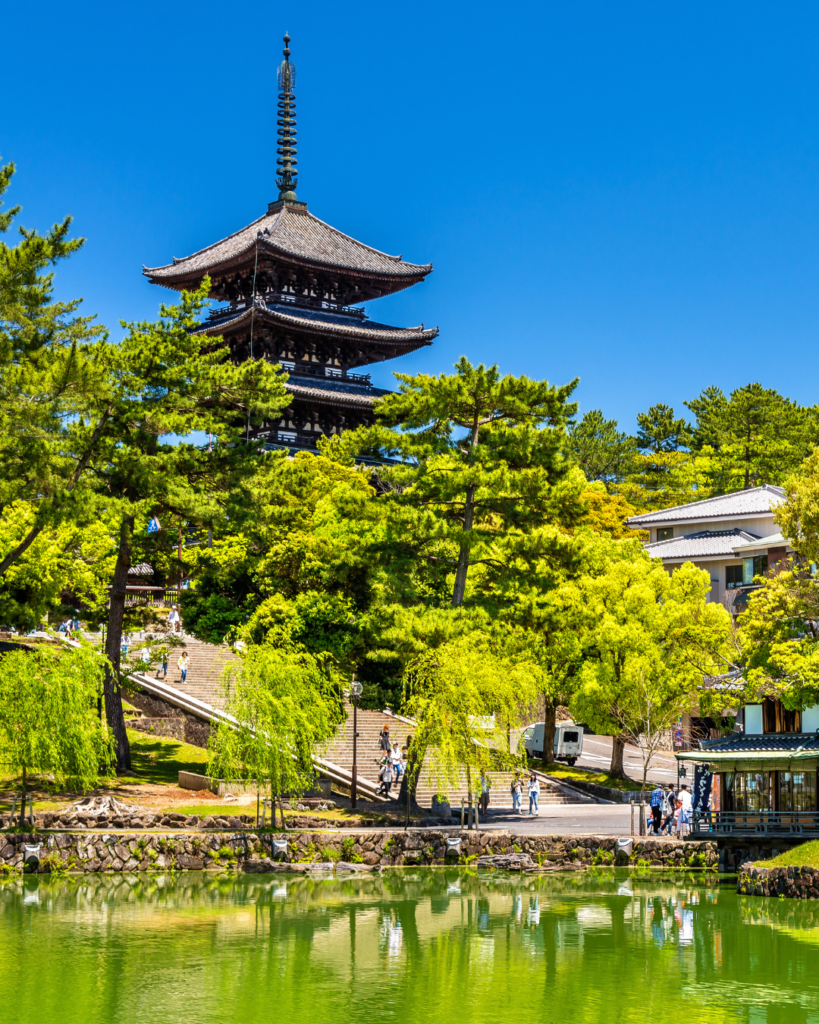
Tea House Experience
To truly unwind, visit a traditional Japanese tea house for a calming tea ceremony. Many gardens and cultural sites in Nara offer this experience, allowing you to savor high-quality matcha while learning about the art of tea making. It’s a delightful way to immerse yourself in Japanese culture and end your day on a relaxing note.
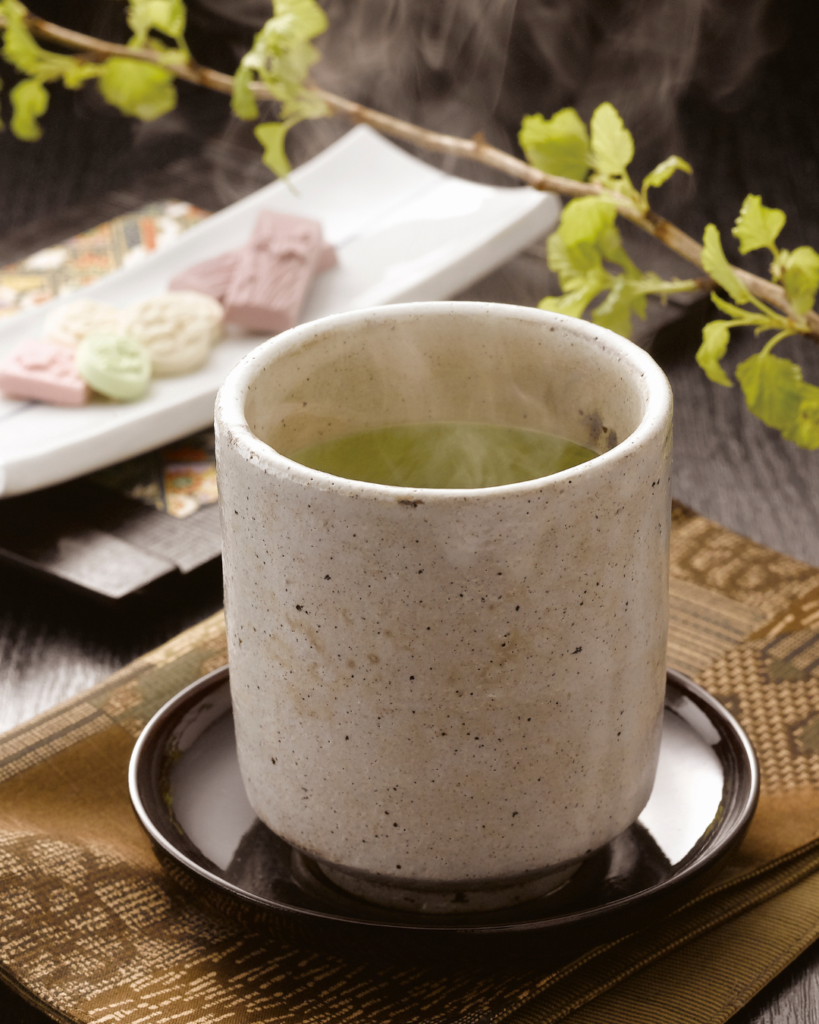
Practical Tips and Recommendations
To ensure your day trip to Nara is as enjoyable and hassle-free as possible, here are some practical tips and recommendations. These insights will help you make the most of your time and navigate the city like a pro.
Best Time to Visit
Nara is beautiful year-round, but the best time to visit is during the spring (March to May) and autumn (September to November). In early April, you can catch the cherry blossoms in full bloom, which is a magical experience. Autumn brings stunning foliage, adding vibrant colors to the landscape. Avoid the summer months if possible, as it can get quite hot and humid, and the winter months, while quieter, can be chilly.
What to Bring For Your Nara Day Trip Itinerary
When planning your Nara day trip, pack light but smart. Comfortable walking shoes are a must, as you’ll be doing a lot of walking.
A small backpack with essentials like water, snacks, and a portable phone charger will keep you prepared. Don’t forget your camera to capture all the beautiful sights, and if you’re visiting in spring or autumn, bring a light jacket or sweater.
Using Google Maps
Navigating Nara is straightforward with the help of Google Maps. This handy tool will guide you to all the main attractions and help you find the best routes between them. Make sure to download the offline maps for Nara in case you encounter any areas with limited internet access. It’s also useful for finding nearby restaurants, restrooms, and hidden gems that aren’t on the main tourist trail.
Timing Your Visits
To make the most of your day, start early. Aim to arrive in Nara by 8am to avoid the crowds and have ample time to explore. Plan your itinerary to include the busiest spots like Todai-ji Temple and Nara Park in the morning, when they are less crowded. Use the afternoon to visit museums and quieter sites. This way, you’ll have a more relaxed and enjoyable experience.
Budgeting for the Day
While many of Nara’s attractions are free, some, like the museums and certain temple grounds, charge an entrance fee. Budget for the extra cost, as well as for food and souvenirs. Have cash on hand as not all places accept credit cards.
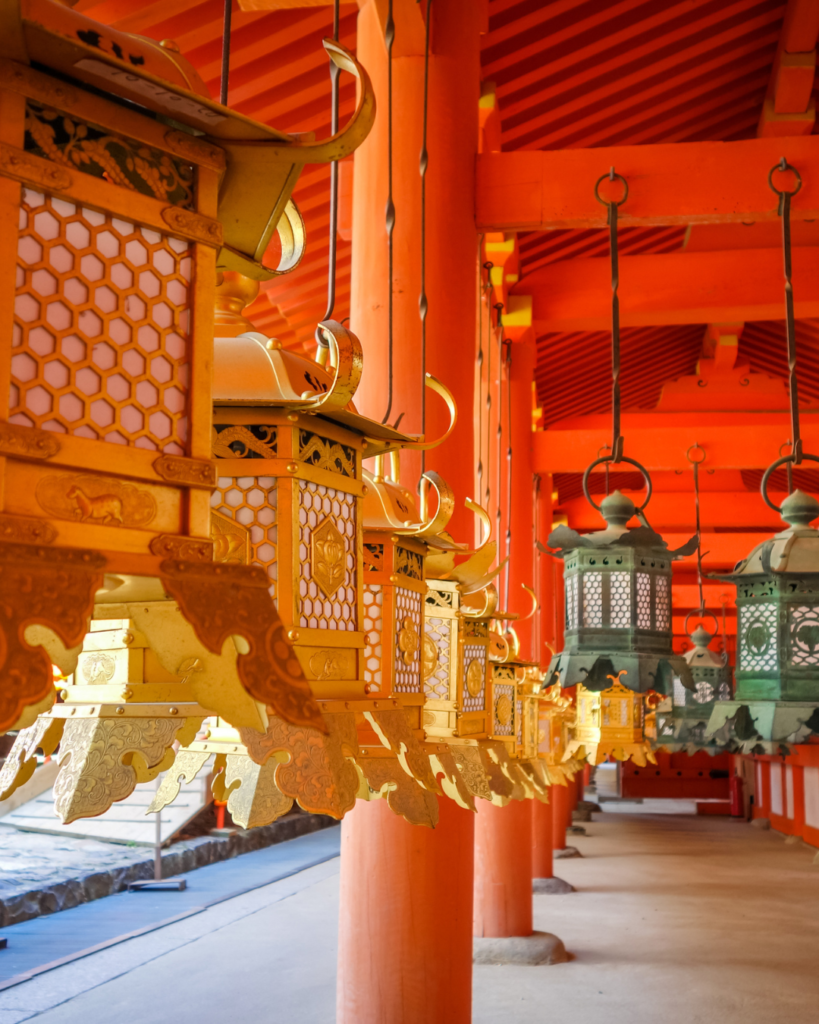
I hope this guide has inspired and prepared you for an unforgettable day trip to Nara. From the enchanting deer of Nara Park to the awe-inspiring Todai-ji Temple and the serene beauty of Isuien Garden, Nara offers a perfect blend of cultural richness and natural charm.
Whether you’re marveling at ancient architecture or discovering hidden gems, Nara is a destination that promises both adventure and tranquility. Put on your most comfortable shoes, and get ready to create memories that will last a lifetime.

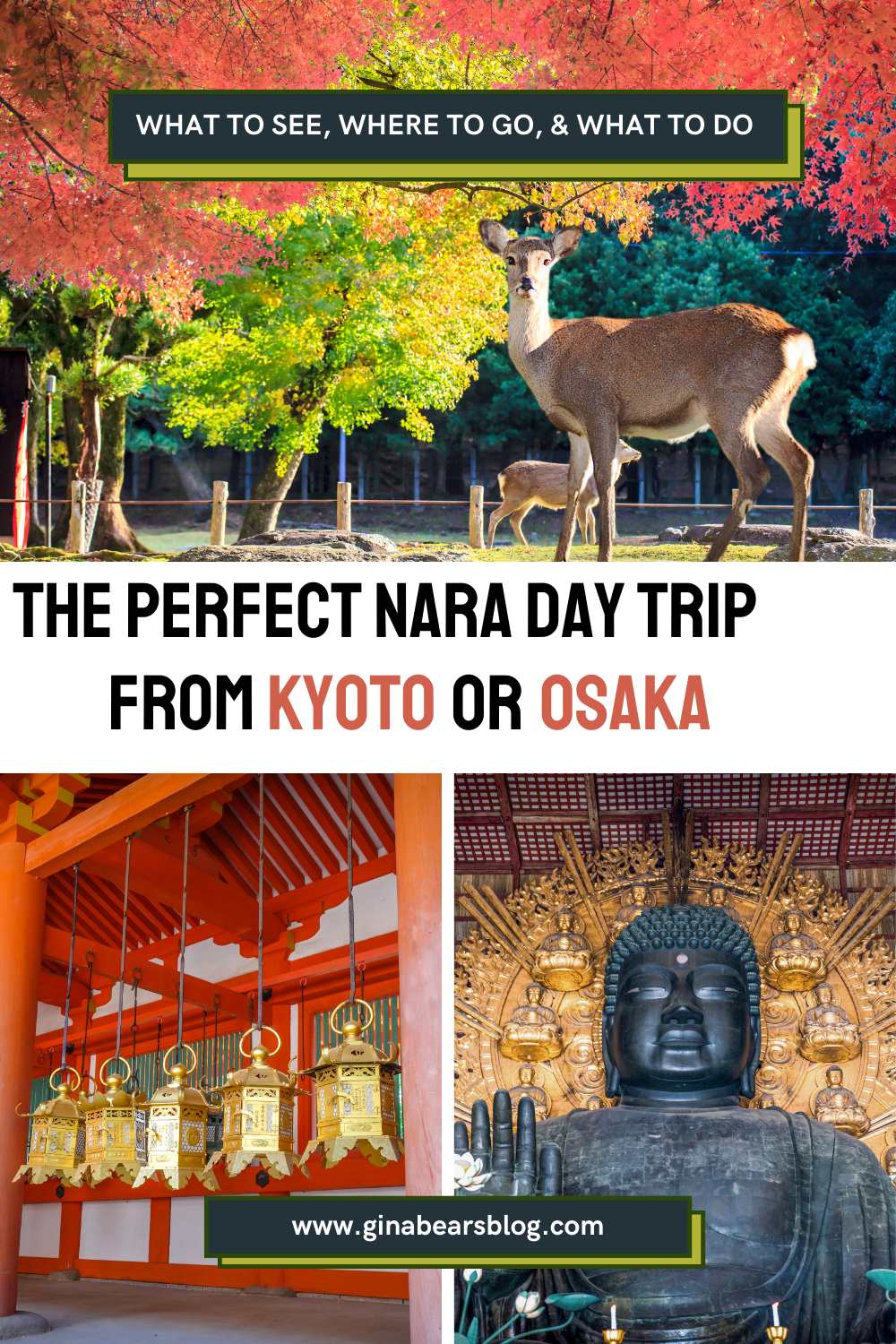
This post contains affiliate links which means at no additional cost to you, I make a small commission to help keep Gina Bear’s Blog running. Thanks for your support!
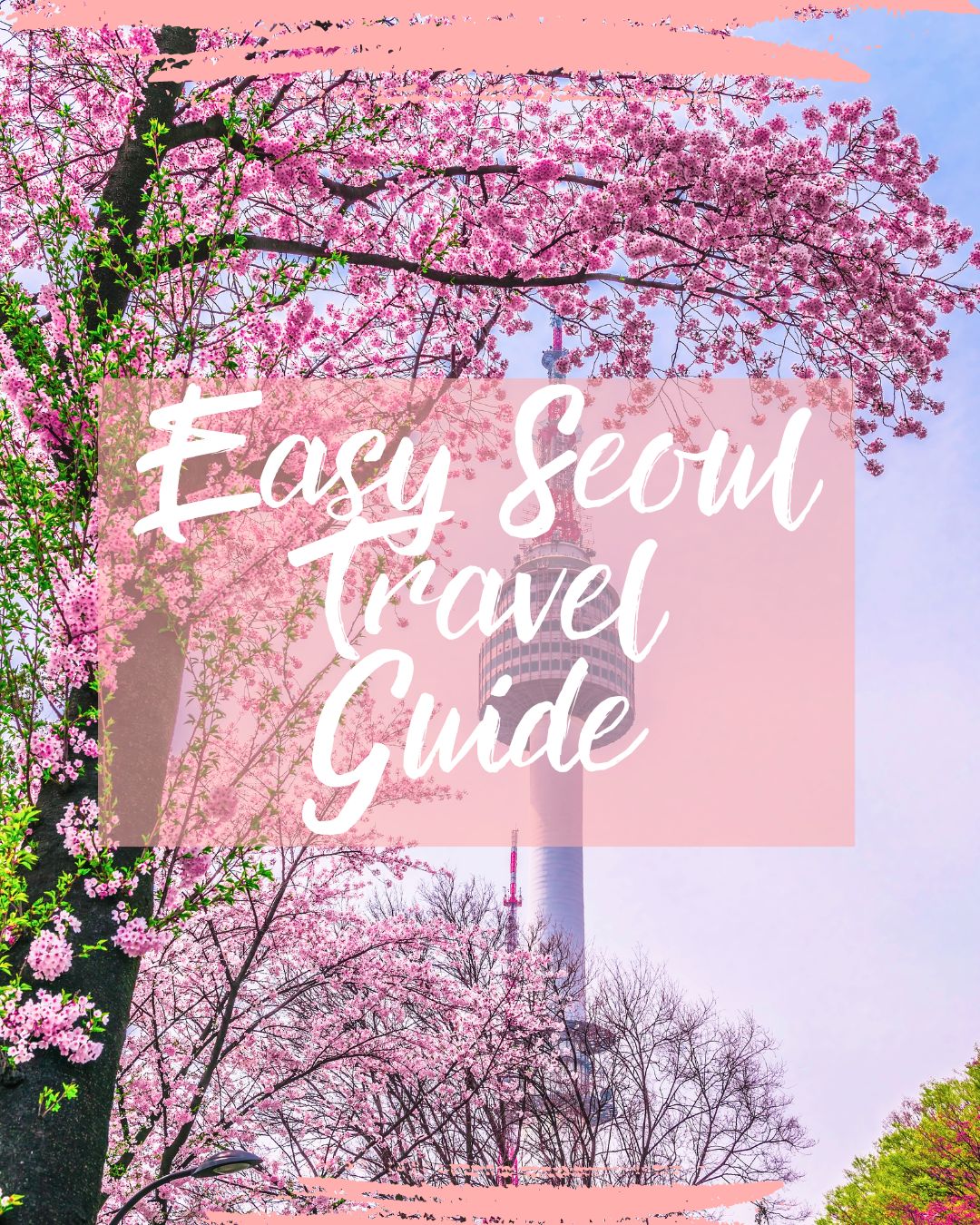
Free Seoul E-Book
Do you love South Korea?
Enter your name and email address and click the button below to receive your Easy Seoul Travel Guide so you can travel like a local!

